Find Internet In My Area
Finding the best internet service provider for your home starts with narrowing down the available ISPs in your area. That’s not always easy, as internet availability often varies by ZIP code and even by address. Save for satellite internet providers, which are available everywhere in the US, internet providers tend to operate in specific areas. Consequently, the available ISPs in your area will depend entirely on where you live.
What’s the best way to find internet service near you? Hopefully this page will help. The tool below uses proprietary technology to find ISPs near you and the plans they offer (it also powers the offers above, showing which are available in your ZIP code). Further down the page, you’ll find a broader overview of internet availability and lots of FCC maps to shed further light on where the top ISPs offer service.
We did some ISP availability research for you
Well, I should say our technology did some ISP availability research for you. Even after years of covering internet providers, I probably couldn’t tell you right off the top of my head which internet providers are available in your area or what plans they offer. However, our proprietary ISP search tool (above), can do just that.
How our ISP availability tool works
Our ISP availability tool identifies your general location then runs a search through our database to return results of internet providers in your area. It’s not perfect, though, so if the displayed ZIP code is a little off, or if you’re moving to a new location and want to check out your options ahead of time, just change the ZIP to prompt a new search with updated results. We ask for a ZIP code to ensure we’re providing the most accurate results, and that’s it. Our money is made from advertising and partnerships with the providers, not your data.
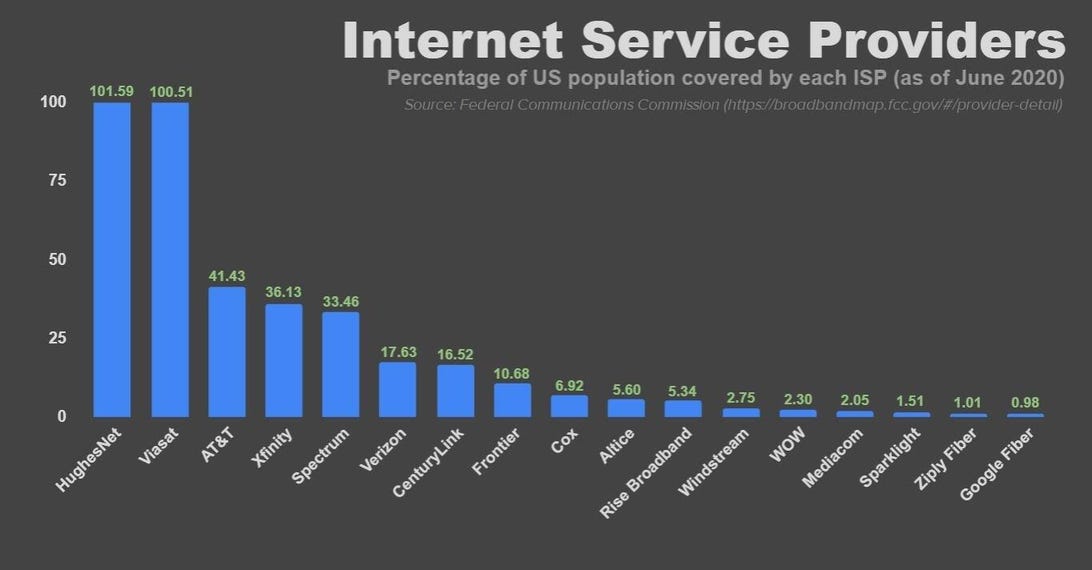
Ry Crist/CNET
Internet provider availability overview
ISP availability is always changing, which is why the FCC updates provider data twice per year (see CNET’s breakdown of the latest FCC data by Ry Crist). It’s this data that we use to determine available internet providers in your area and the technologies they use.
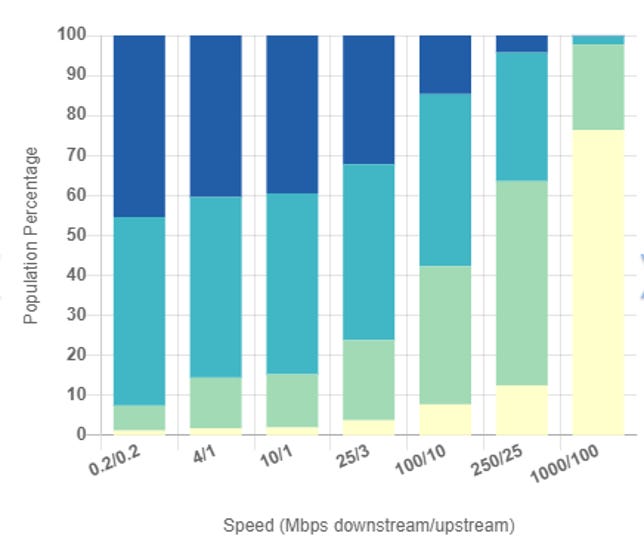
FCC
Broadband and high-speed internet availability
According to the FCC, 99.96% of US residents have access to a broadband internet connection, which it defines as one that can provide download speeds up to 25 megabits per second and upload speeds of 3Mbps. On top of that, around 96% will have at least three options for broadband internet.
The lived experience of the broadband divide suggests those FCC numbers are a little high, and satellite internet may be the reason why. When you remove satellite technology from the list, broadband availability drops to 96%, with less than a third of US residents having three or more ISPs in their area. As you go up in speed from 25 to 100, 250 and 1,000Mbps, it’s evident that high-speed options can be limited. Faster speeds and better access to them could be on the way, however, as the Senate recently introduced a bill to invest billions in US broadband infrastructure.
Top internet providers by availability
- AT&T: Available in 21 states and to more than 41% of US residents
- Xfinity: Available in 39 states and to more than 36% of US residents
- Spectrum: Available in 41 states and to more than 33% of US residents
- Verizon: Available in 9 states and to more than 17% of US residents
- CenturyLink: Available in 36 states and to more than 16% of US residents
- Frontier: Available in 25 states and to more than 10% of US residents
- Cox: Available in 18 states and to more than 6% of US residents
- Altice brands: Available in 21 states and to more than 5% of US residents
- Rise Broadband: Available in 16 states and to more than 5% of US residents
- Mediacom: Available in 22 states and to more than 2% of US residents
- Windstream: Available in 18 states and to more than 2% of US residents
There’s a good chance one or more of the providers listed above are available in your area. You’ll find detailed information about each provider’s availability and network below.
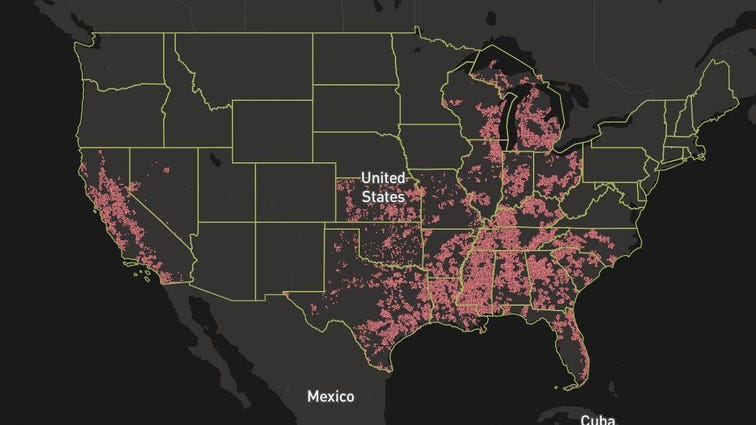
FCC/Mapbox
AT&T is the most widely available internet provider (excluding satellite) in the US. AT&T internet may be available near you if you live in or are moving to the South or Midwest, as well as parts of California, Oklahoma, Nebraska and Nevada.
Much of AT&T’s network is DSL-based and can offer speeds of 75Mbps or higher depending on your location. Around 30% of those in AT&T service areas will be eligible for fiber and have access to gigabit speeds — download speeds of 1,000Mbps are available in more than 99% of AT&T fiber service areas.
AT&T Home Internet
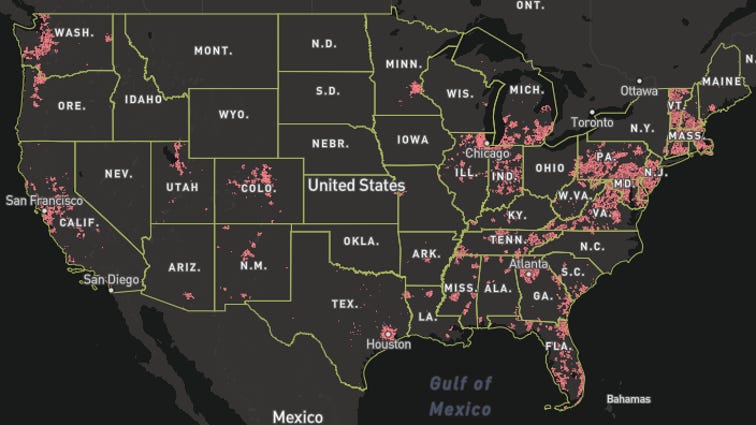
FCC/Mapbox
Xfinity is the largest cable internet provider in the US, extending broadband service to more than a third of residents. Xfinity may be available in your area if you live in the mid-Atlantic, Northeast, Midwest or along the West Coast, but random pockets of serviceability can be found in much of the South as well as parts of Arizona, Colorado, New Mexico and Utah.
Xfinity largely employs a cable network for service. By largely, I mean 99.98% is cable or a cable/fiber hybrid by the FCC’s numbers. While Xfinity does advertise a fiber network and 2-gig plans, availability is super scarce, to the tune of 0.02% of Xfinity service areas.
Xfinity Internet
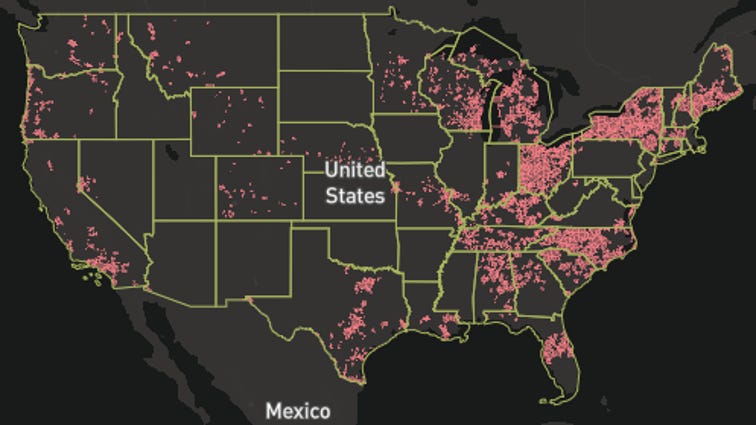
FCC/Mapbox
Spectrum is the second-largest cable provider in the US behind Xfinity, covering more than a third of the population across 41 states. Though the two providers cover nearly 70% of US households combined, there is little to no overlap in serviceability as Spectrum mainly operates in areas where Xfinity does not.
Since Spectrum covers so many states, there’s a possibility that you could be eligible for service just about anywhere, even Hawaii, but those on the East Coast or in the Midwest are most likely to find Spectrum internet to be available.
Like Xfinity, Spectrum mostly employs a cable or cable/fiber network with few true fiber connections available (less than 1% of service areas are eligible for fiber service). Spectrum makes good use of its cable network, however, as gigabit download speeds are available in 99.98% of service areas.
Spectrum Internet
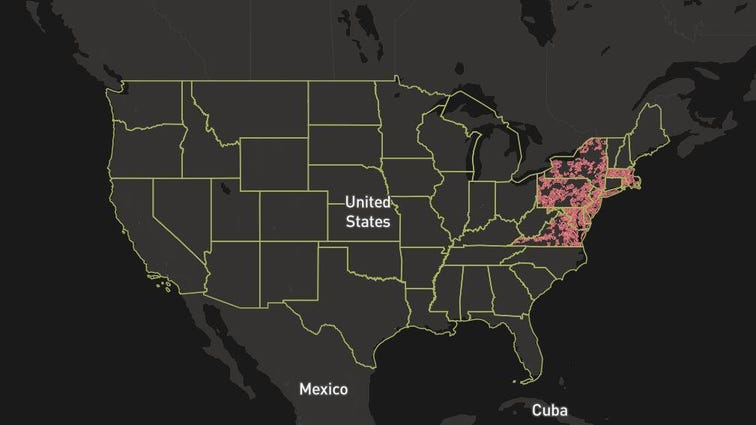
FCC/Mapbox
Verizon Fios and Verizon Home Internet (its DSL service) cover much of the Northeast and mid-Atlantic. Though service is only available in nine states, Verizon still covers an impressive 17% of US residents, thanks largely to the provider’s extensive fiber coverage in cities such as Baltimore, Boston, New York, Philadelphia and Pittsburgh.
Nearly two-thirds of Verizon’s network is fiber, which is a higher fiber percentage than you’ll find from just about any major provider. With such a large fiber network, Verizon is capable of delivering fast upload and download speeds to more than 37 million people. The remaining third of those who are eligible for Verizon internet will have access to the provider’s DSL service, which cannot offer broadband speeds in any location, according to the FCC.
Verizon Fios
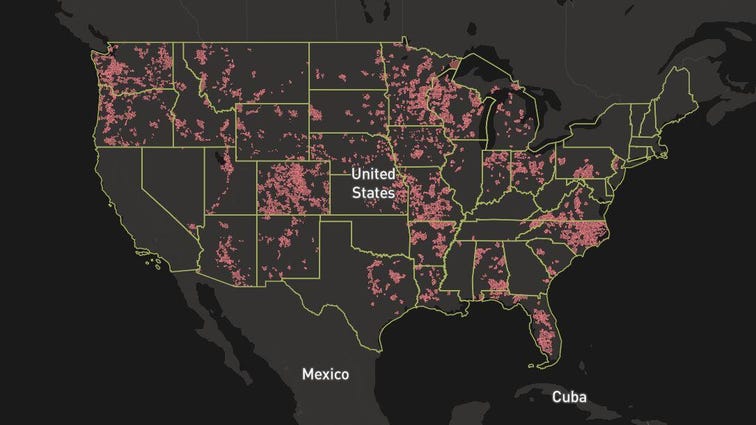
FCC/Mapbox
CenturyLink is available in 36 states but only to 16% of the US population, implying that the provider largely operates in rural or suburban areas. There are some major cities, such as Denver, Minneapolis, Salt Lake City and Seattle; otherwise, look for CenturyLink to be available just outside the city.
If you live in a city where CenturyLink is available, there’s a good chance you’ll be eligible for fiber service as around a quarter of CenturyLink’s network is fiber. More than 75% of CenturyLink customers will have access to DSL service, but CenturyLink does a good job of delivering relatively fast speeds over its DSL network. The FCC reports around 60% of DSL customers can get broadband speeds, and more than 27% can get speeds of 100Mbps or higher.
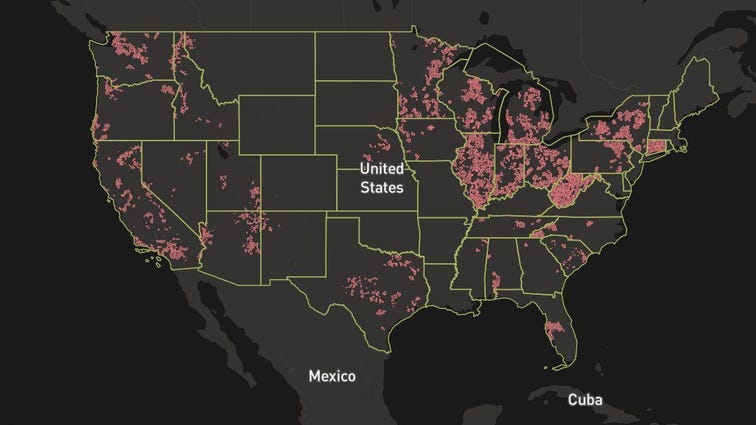
FCC/Mapbox
Frontier Communications lost a chunk of its network after selling fiber and DSL lines in the Pacific Northwest to Ziply Fiber in 2020, but the provider is still one of the largest fiber and DSL providers, covering around a tenth of US residents across 25 states. Frontier serviceability is greatest in the Midwest, but there’s also a good chance Frontier is available in your area if you live in California, Connecticut, upstate New York or West Virginia.
Frontier has made an effort to increase its fiber coverage in recent years. The provider remained at around 33% fiber coverage from December 2019 to June 2020, in spite of losing all fiber networks in the Pacific Northwest, indicating that fiber availability is improving in other areas. If Frontier fiber service has not yet reached your area, DSL may be a plausible broadband option. Speeds of 25Mbps or higher are available to around a third of customers, while 10% of those in Frontier service areas can get speeds of 100Mbps or higher.
Frontier Communications
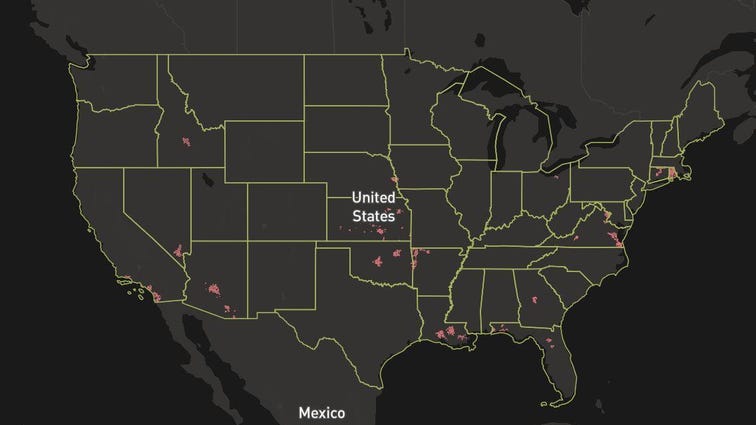
FCC/Mapbox
Cox Communications is the third largest cable provider in the US, but overall availability is far lower than Xfinity and Spectrum, covering less than 7% of residents across 18 states. Cox is most likely to be available in your area if you live in Las Vegas, New Orleans, Oklahoma City, Phoenix, San Diego or anywhere in the state of Rhode Island.
Like with Xfinity and Spectrum, cable or cable/fiber makes up the bulk of the Cox network, but the provider does boast a larger fiber network at 5% coverage. Download speeds up to 1,000Mbps are available in all Cox service areas, but those who are lucky enough to be eligible for fiber service can enjoy symmetrical upload and download speeds.
Cox Communications
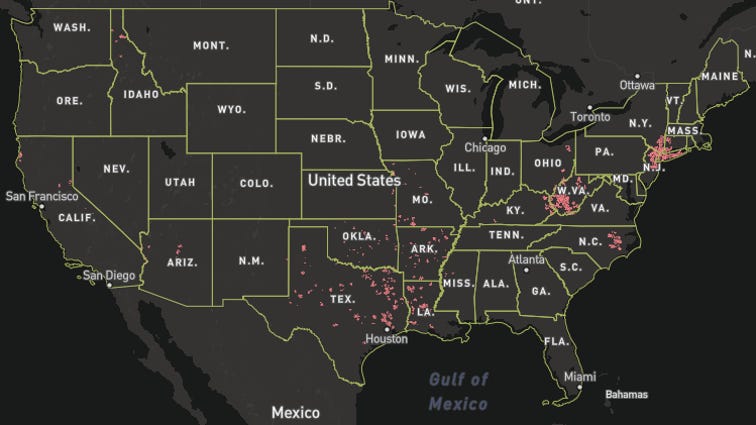
FCC/Mapbox
Altice covers around 5% of US residents through its Optimum and Suddenlink brands. Optimum is available in fewer states than Suddenlink, but likely covers a larger share of the population as coverage spans much of the greater NYC area and parts of Pennsylvania.
Altice primarily uses a cable or cable/fiber hybrid network to deliver service, but the company has invested in fiber expansion in recent years. Optimum, for example, now extends fiber internet service to more than 1 million residents in the NYC area.
Optimum Internet
Suddenlink
Fills in the remainder of Altice service areas
Another Altice brand, Suddenlink, is available everywhere outside of Pennsylvania and the greater NYC area in the map above. West Virginia residents have the greatest Suddenlink availability, but those in parts of Arkansas, Louisiana or Texas may find Suddenlink internet in their area.
According to an Altice spokesperson, gigabit service is available in 80% of Suddenlink service areas. While 80% gig coverage is somewhat low compared to cable providers such as Spectrum or Xfinity, it’s important to note that Suddenlink largely operates in rural or suburban areas where high-speed connections, especially those with gigabit capabilities, are less common.
Rise Broadband
Largest fixed wireless provider bringing service to rural areas of 16 states
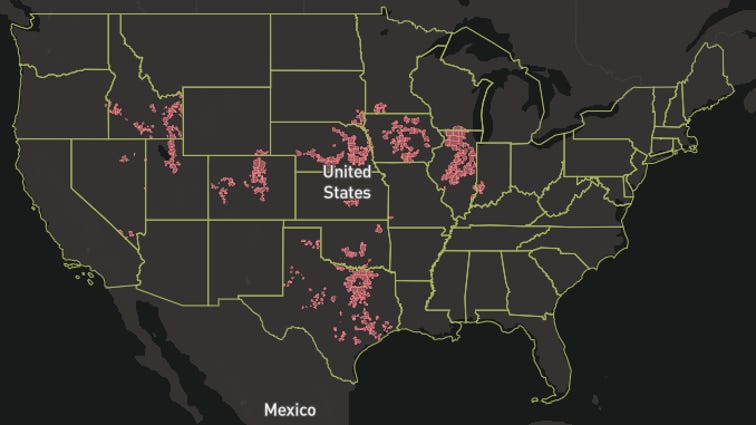
FCC/Mapbox
Rise Broadband is the nation’s largest fixed wireless provider, available to around 5% of the US population throughout parts of 16 states. Fixed wireless internet doesn’t require a cable or phone line to your home, making it ideal for rural internet service. Consequently, rural areas are where you’re most likely to find Rise Broadband, especially those in the central US or rural parts of Idaho, Nevada and Texas.
Getting broadband service to rural areas can be a challenge, but Rise Broadband does a decent job. Around 83% of those in Rise Broadband service areas can get speeds up to 25Mbps or higher, totaling around 14 million largely rural residents who may otherwise not have access to a broadband connection.
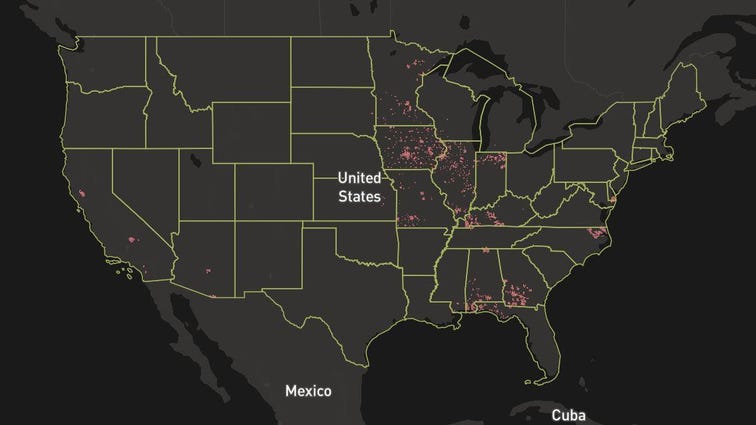
FCC/Mapbox
Mediacom covers random areas throughout much of the Midwest, but you’ll find service in parts of the South along the Gulf Coast and in southern Georgia, as well as parts of eastern North Carolina and along the southern Delaware/Maryland border. All in all, Mediacom is available to just over 2% of US residents with coverage spanning 22 states.
If Mediacom provides internet in your area, expect a cable connection that can deliver gigabit download speeds. A full 100% of Mediacom’s network is cable and 97% of those in Mediacom service areas are eligible for speeds up to 1,000Mbps.
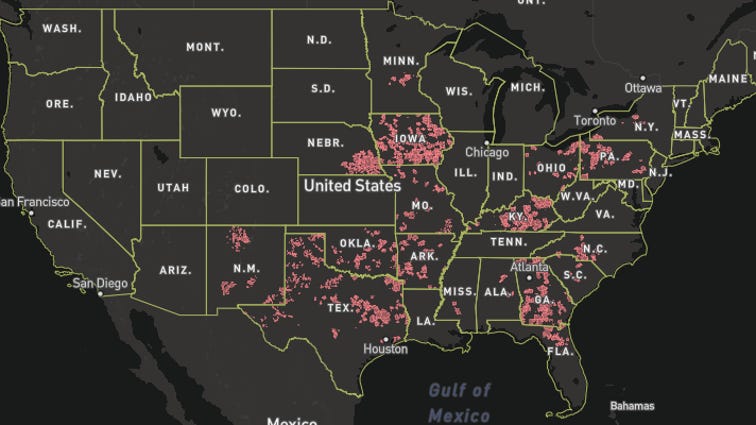
FCC/Mapbox
Another champion of rural areas, Windstream’s internet service, Kinetic, is available in 18 states but only 2% of the US population. Kinetic internet may be available in your area if you live in a rural or suburban area in the South or Midwest, but Kinetic coverage does reach as far west as New Mexico. Iowa, Georgia, Kentucky and Texas have the greatest Kinetic serviceability, but you may also find Kinetic internet near you in parts of Arkansas, New York, North Carolina, Ohio and Pennsylvania, among other states.
If Kinetic internet is available near you, it’s likely to be DSL service as fiber makes up just over a quarter of the Kinetic network. Though DSL is typically slower than cable or fiber service, Kinetic DSL is capable of delivering speeds of 25Mbps or higher in an impressive 85% of service areas. Around 64% will have access to speeds of 100Mbps or higher while nearly 8% may be eligible for speeds of 250Mbps or higher. That’s the fastest DSL service you’re likely to find from any provider.
Kinetic Internet
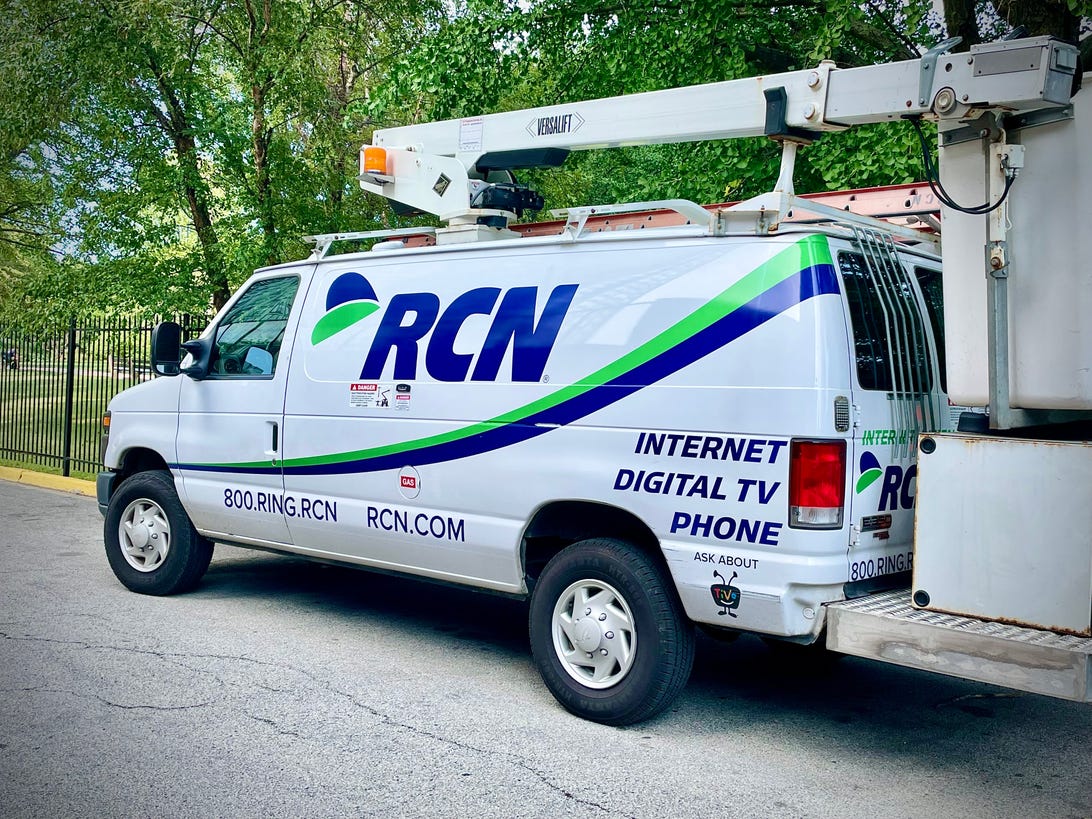
Ry Crist/CNET
We didn’t forget about local internet providers
A dozen or so internet providers make up the majority of internet serviceability, but there are literally thousands of smaller ISPs that operate in hyperlocal markets. Providers such as RCN, Ziply Fiber and WideOpenWest, among many, many others, do a great job of serving their local communities, but there are simply too many to list here.
If you didn’t see a provider you know to be available in your area in the search tool towards the top of the page, don’t worry. We’re working to get them in there to give you a full, accurate picture of the best internet providers in your area.
Internet availability by technology
The available internet tech type can make a big difference in available speeds and performance. Fiber internet is the preferred option, as it comes with the best upload and download speed potential, not to mention superior reliability, but availability is still relatively low. Unless you live in or near a large city, it’s unlikely that fiber internet will be available near you.
Cable internet is another popular choice for high-speed internet in many areas, boasting much higher availability than fiber internet but without the fast upload speeds or same reliability. DSL and fixed wireless internet are excellent rural internet options, but can’t compare to the speeds or reliability of fiber or cable connections.
Internet connection type availability
| Connection type | National availability | 25Mbps or higher coverage | 100Mbps or higher coverage | 250Mbps or higher coverage | 1,000Mbps or higher coverage |
|---|---|---|---|---|---|
| Cable | 89% | 89% | 88% | 84% | 2% |
| DSL | 89% | 42% | 22% | 0% | 0% |
| Fiber | 45% | 45% | 41% | 37% | 21% |
| Fixed wireless | 43% | 36% | 14% | 4% | 1% |
Internet in my area FAQs
Why aren’t there more internet options near me?
The costs of expanding to and operating in a new area, especially one that is already serviced by a competing ISP, is the main factor that prevents providers from offering service in more areas. As a result, it’s common for households to have availability to just one provider of a particular service type.
For example, though cable internet is available to 89% of households, only 7% have access to more than one cable internet provider. Multiple provider options are even more limited with fiber-optic service. Though roughly 43% of households are eligible for fiber internet, less than 3% have more than one option.
Will new internet providers come to my area?
It’s difficult to say if the largest cable and fiber providers will continue expanding into new service areas, but smaller providers — and those with potentially industry-disrupting technologies — could lead the broadband expansion efforts in coming years.
5G home internet, from providers including T-Mobile and Verizon, is off to a promising start, delivering high-speed broadband to underserved areas and creating much-needed competition in others. Satellite internet from SpaceX’s Starlink is also set to improve broadband options in rural and suburban areas in coming years, as is Amazon’s Project Kuiper.
That’s exciting news for rural areas, but what about more options in metro areas, where residents typically have the choice between a cable or fiber provider? Providers like Starry Internet, which uses a fixed wireless network, already offers an affordable, high-speed alternative to the traditional established providers in five major markets and intends to begin service in new cities in the near future.
So in short, I wouldn’t look to the big providers and established technologies to bring new internet options to your area anytime soon. The exception there could be fiber internet, which has almost doubled its availability in the last five years. However, fiber availability has only increased by one or two percent per year since 2018, indicating that fiber expansion is slowing.
Why is the internet in my area so slow?
There are a number of factors that can contribute to slow internet speeds, but if the internet in your area — not just your home — is slow, it’s likely due to the technology. Satellite and DSL internet, common internet options in rural areas, are slower than most other connection types, typically maxing out at 25 to 100Mbps.
If you have cable or fiber internet service and your connection is consistently slow, it could be the result of using Wi-Fi, which can significantly reduce your actual speeds. Resetting your router, or upgrading to a new router, could improve your Wi-Fi speeds. You may also want to consider upgrading your plan to a faster speed, if available.
For all the latest world News Click Here

